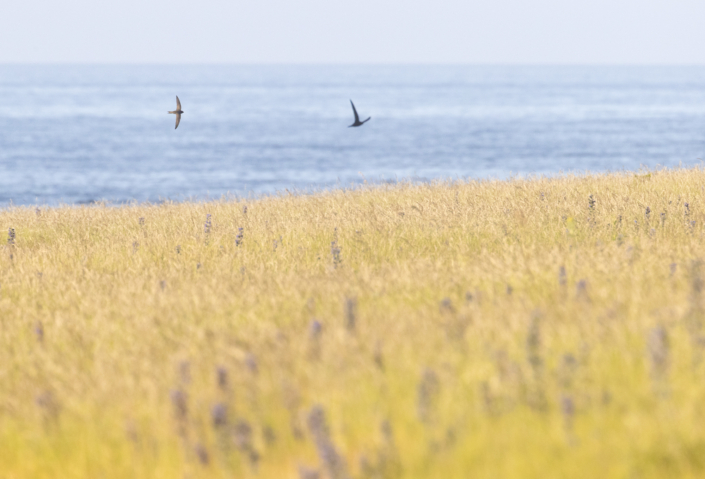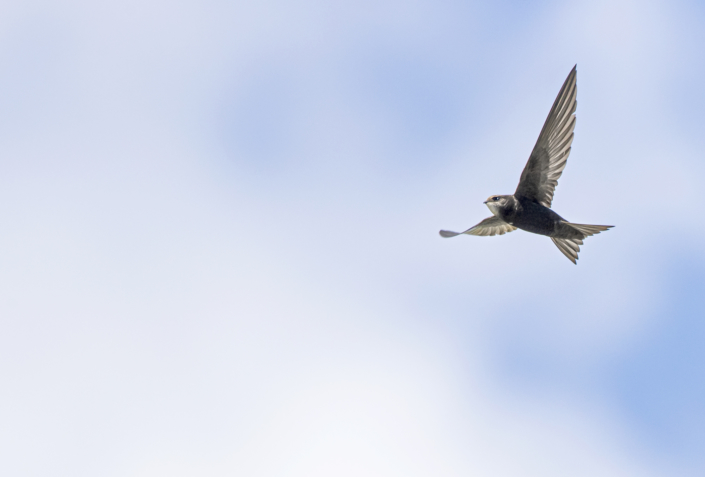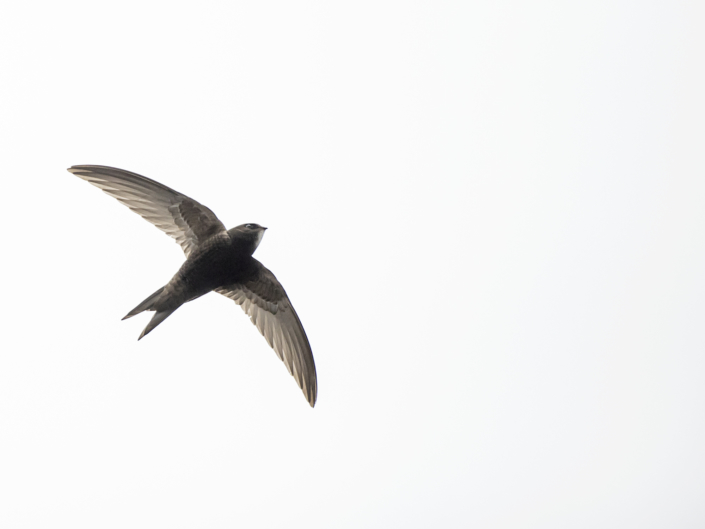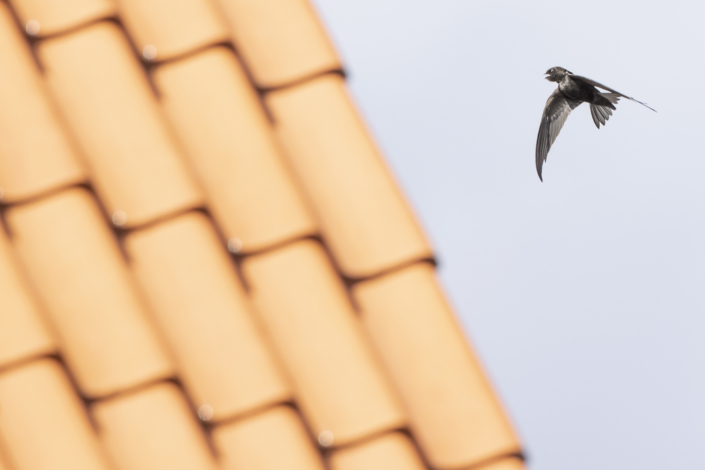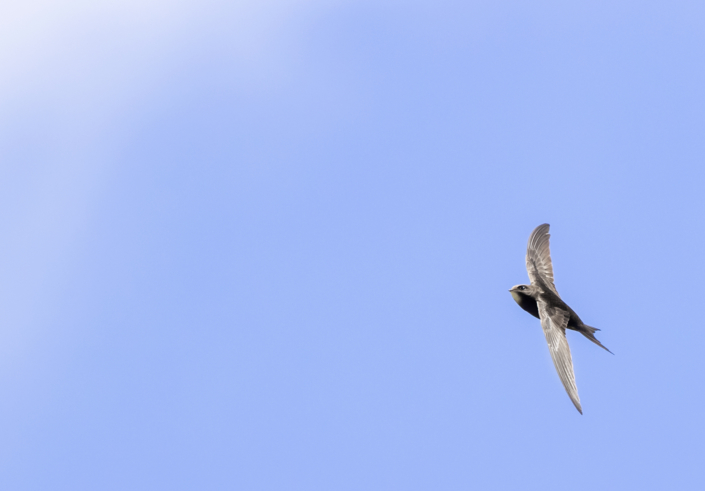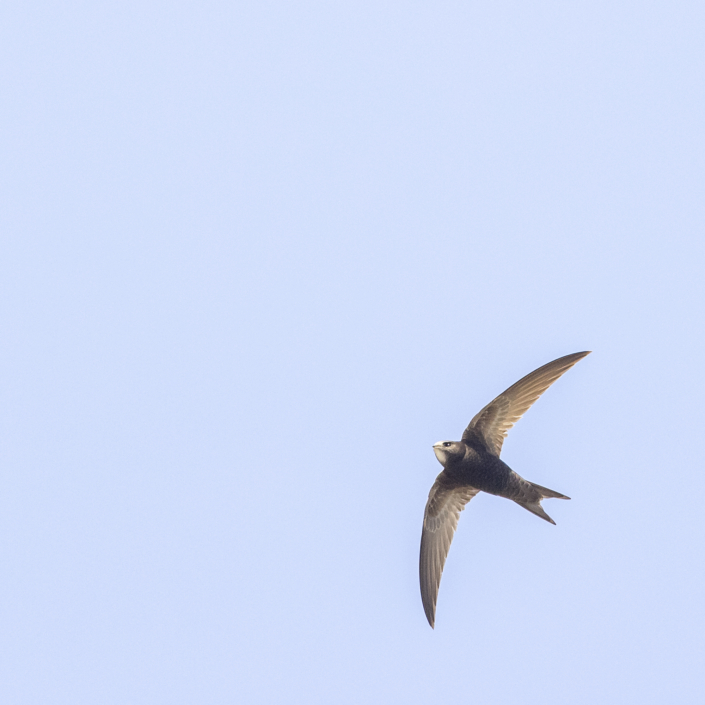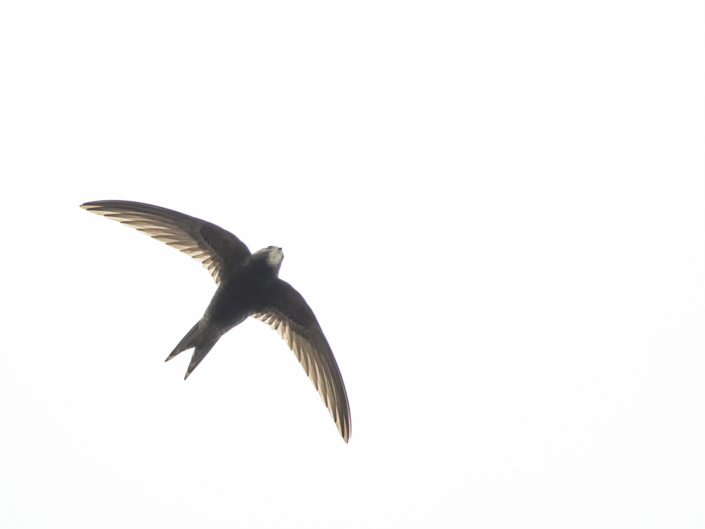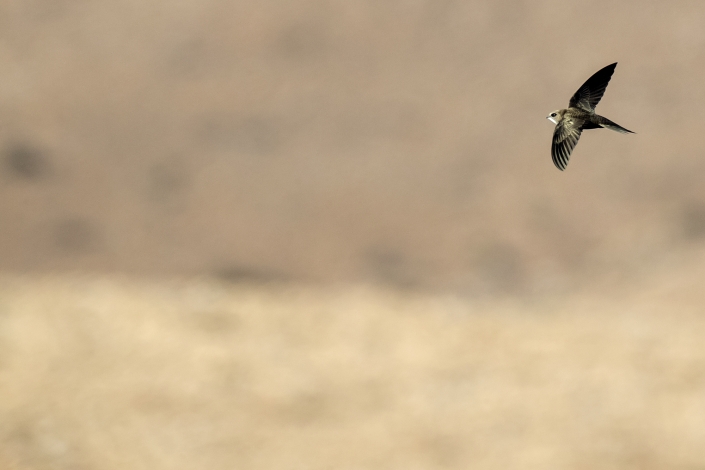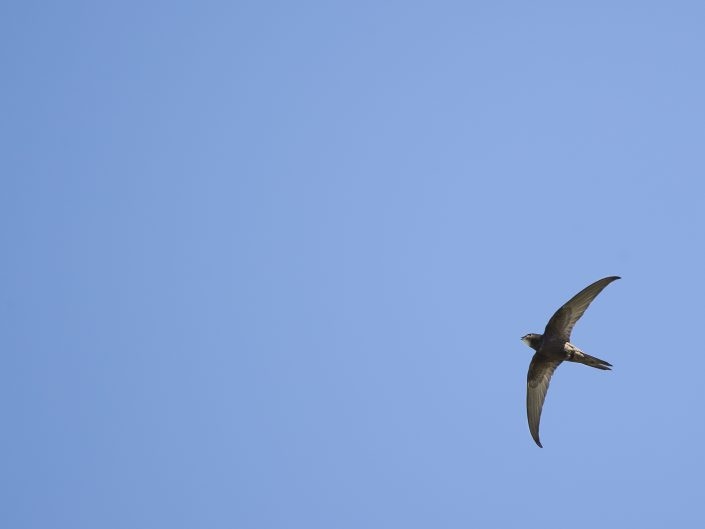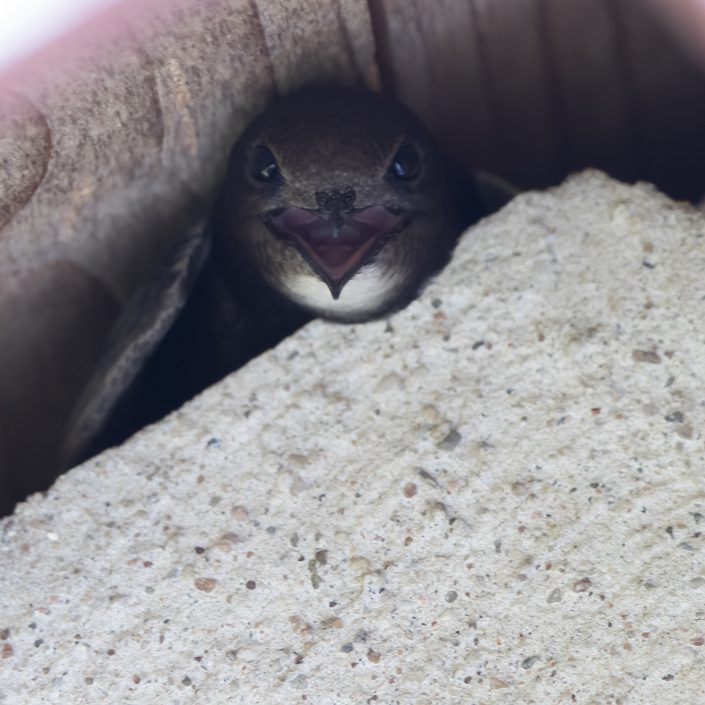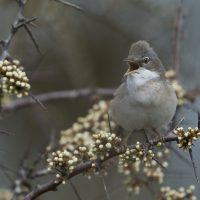This post is also available in: Swedish
Common swift – Apus apus
Common swift – Apus apus
Common swift is a medium-sized bird, superficially similar to the barn swallow or house martin but somewhat larger. It is, however, completely unrelated to those passerine species, since swifts are in the separate order Apodiformes. The resemblances between the groups are due to convergent evolution reflecting similar life styles. The swifts’ nearest relatives are thought to be the New World hummingbirds and the Southeast Asian treeswifts.
Its scientific name Apus is Latin for a swift, thought by the ancients to be a type of swallow with no feet (from Ancient Greek α, a, “without”, and πούς, pous, “foot”).
Swifts have very short legs which they use primarily for clinging to vertical surfaces (hence the German name Mauersegler, literally meaning “wall-glider”). They never settle voluntarily on the ground, where they would be vulnerable to accidents and predation.
Swifts may nest in former woodpecker tree burrows found in ancient forests, such as some 600 reported nesting in the Białowieża Forest of North Eastern Poland, or the small colony found in a combination of woodpecker holes and tree nestboxes on the RSPB’s reserve at the Caledonian Forest in Abernethy, Scotland. While tree holes together with cliffs may have comprised their historic nesting resource, the almost complete removal of ancient forest from their nesting range has resulted in adaptation to man-made sites. Swifts build their nests of air-borne material caught in flight, bonded with their saliva, in suitable buildings hollows, such as under tiles, in gaps beneath window sills, and most typically under eaves and within gables.
It sounds like thisRecording by Timo Tschentscher from Xeno canto



